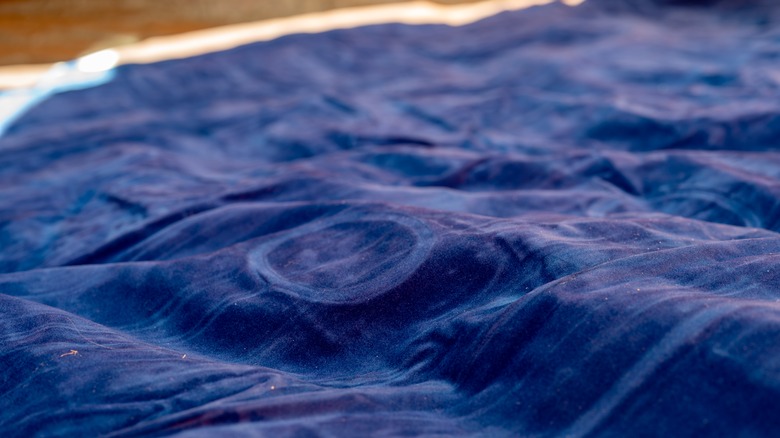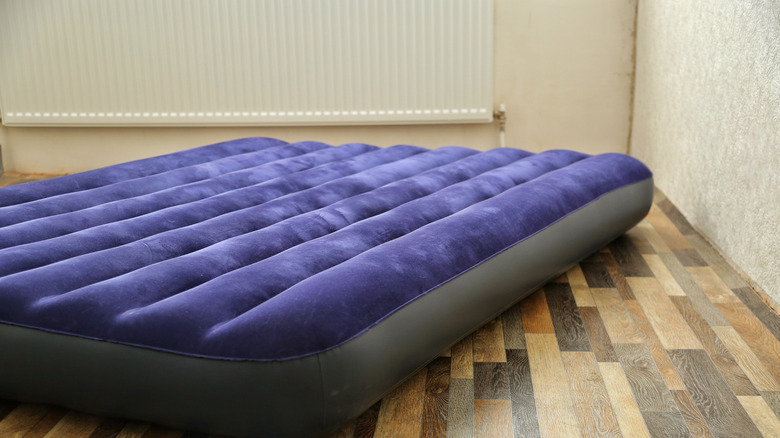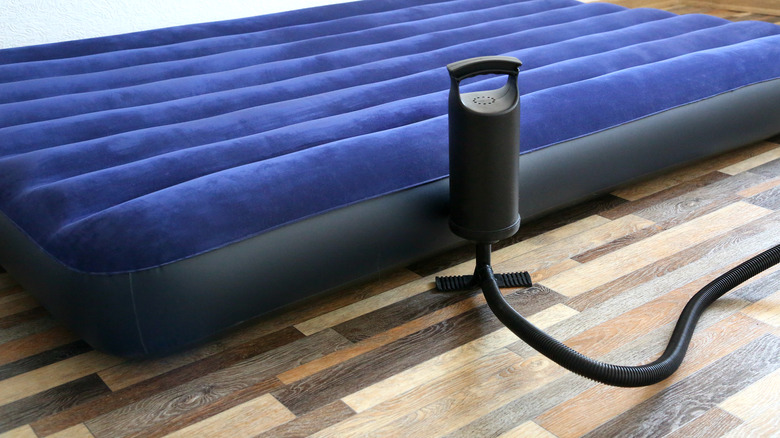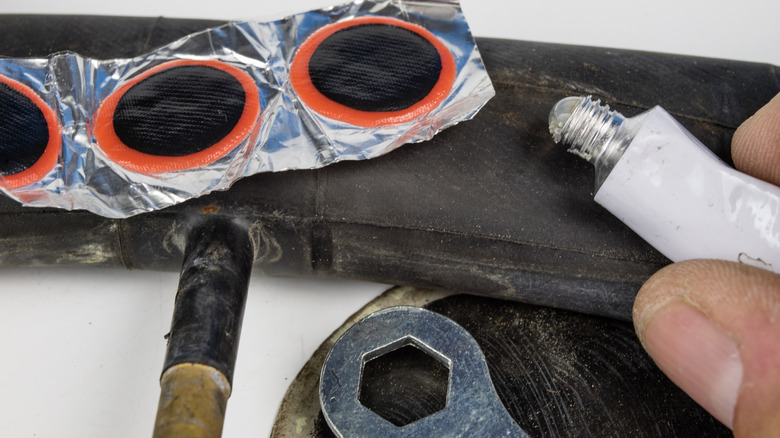The Fastest Fix To Patch A Hole In An Air Mattress
Owning an air mattress makes having visitors a breeze but is also useful for camping trips, vacations, and even backyard adventures. You can get a great night's sleep on these handy blow-up beds, and they range in size from singles to king size. While their convenience makes them a staple of many homes, when your mattress suffers a hole, it can be a frustrating experience. If you don't patch it before use, you'll wake up on the floor with only a thin material between you and the hard surface. There are a few easy steps you can take to patch an air mattress hole, and the sooner you get to it, the better.
Locating, covering, and securing the hole will ensure your mattress continues to serve its purpose and can elongate its life for many more uses. According to Sleep Foundation, all blow-up beds will lose some of their firmness or inflation the more you use them, but they should still allow a comfortable sleep without deflating completely. If this happens, it means there is a hole somewhere on the unit, which needs to be found and cleaned up before being fixed. The following steps will help you salvage your air mattress so it can last for many more adventures, guests, or backyard campouts.
Find the leak or hole
The first thing you need to do when fixing an air mattress hole or puncture is to find out where the problem is originating from. The easiest way to do this is to blow up the bed first, then take your time looking over the entire unit. Use your hands to feel for uneven spots, and take the time to flip it over and check all sides/edges. Inspect the seams and the valve, too, since these areas can tear or rip. If you find a spot that feels scuffed or torn, put your hand over that part to see if you can feel air coming out. You can also get on the mattress and listen for escaping air, which can lead you to the source.
Choose Mattress also recommends using a soapy sponge for hard-to-find holes. To use this method, grab a sponge and fill a bucket with soapy water. Wipe the sponge along all the surfaces, making sure to include seams and edges. As you go, gently apply your weight to each section of the mattress, watching for bubbles that may collect over a certain area. These will lead you to the leak.
Clean the area
Once you've found the hole, the hardest part is over. Keeping an eye on where it is located, use a fresh cloth and dish soap to clean the area. Sleep Foundation recommends giving the air mattress time to dry around the hole before attempting to patch it. This way, the patching material will stick properly to the surface, ensuring the leak won't reopen right away. You can wipe away excess moisture with a second dry cloth or towel, but wait until it is completely free from wetness before starting on the next steps.
Cleaning the hole is important because whatever caused the hole in the first place may have left residue that keeps the patch from properly sealing the area. It also ensures the entire leak is exposed, so you know how much space needs to be fixed. Skipping this step leaves the possibility that the patching won't adhere correctly or a portion of the hole will remain open.
Patch the hole
The good news about many modern air mattresses is that they usually come with a patch kit included. When you first take your bed out of the box, make sure to stow this kit in a safe place in case a leak happens. When the air mattress has dried, you can get to work on sealing up the hole. If you lose the patch kit or have already used it before, many stores have their own versions, which are affordable and work just as well. Sleep Advisor recommends picking up a tire patch kit for bikes, which will work on the air mattress as well. Some people don't agree that these work for a blow-up bed, but they can withstand asphalt, cement, and rocky terrain, so it seems they'd be durable enough for an air mattress that sits on the same surfaces.
If you're unsure about purchasing a kit, you can also make your own patches. To do this, you'll need a portion of a thicker plastic shower curtain or other similar material. Measure the plastic against the hole to be sure you cut enough to cover it, then remove those pieces from the rest of the curtain, pool liner, etc. Trim a little extra around the edges so that it extends past the hole. You can use rubber cement, super glue, or gorilla glue, and make sure to add it to both the mattress and cover, then hold the patch in place for a few seconds before leaving it to dry.




